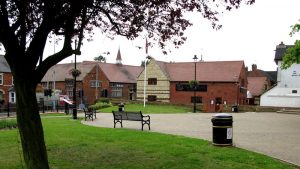- About our town
-
-
About our town
Find Burton Latimer on the map – and discover its history, notable features and European twin-town links
-
-
- Local Amenities
-
-
Local amenities
Find out about the local amenities and facilities in our town – and how to use them
-
-
- Things to do
-
-
Things to do
Eat, drink & stay in Burton Latimer – plus local walks, groups to join and activities to get involved with
-
-
- Places to go
-
-
Places to go
Plan a visit to nearby cinemas, concert halls, museums, galleries, historic houses, gardens and public parks
-
-
- About our town
- Local Amenities
- Things to do
- Places to go

Landmarks
Discover some of the notable buildings and features – ancient and modern – in Burton Latimer.
Discover some of the notable buildings and features – ancient and modern – in Burton Latimer.
Burton Latimer Hall
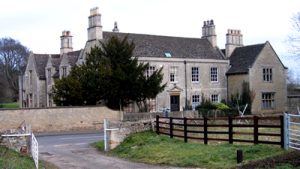 Burton Latimer Hall is on the northern fringe of the town, on Kettering Road.
Burton Latimer Hall is on the northern fringe of the town, on Kettering Road.
The Hall (which is not open to the public) has been in the Harpur family since 1760. It is built of the same light coloured stone as the older part of Burton Latimer and has attractive gardens.
There is said to be a secret passage between the Hall and St Mary’s church – but the tunnel has never been discovered!
Jacobean House
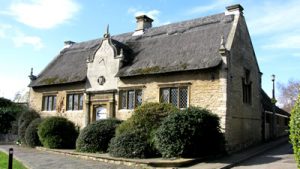 The old Jacobean school house (now a private dwelling) is on Church Street, opposite St Mary’s church and the manor house.
The old Jacobean school house (now a private dwelling) is on Church Street, opposite St Mary’s church and the manor house.
The building dates from the 17th-century, and above the door is a panel inscribed:
“this house was built 1622 the freschoole was founded by thomas burbanke and margaret his wife 1587 memoria. ivsti. benedicta. pro”
St Mary's Parish Church
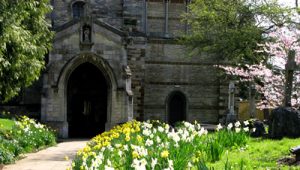 Nobody can be quite sure who the first people were to worship at the site that is now the Parish Church of St Mary the Virgin, Burton Latimer. There was certainly a church there shortly after the Norman Conquest (11th Century BCE), and substantial parts of the Norman church remain to this day.
Nobody can be quite sure who the first people were to worship at the site that is now the Parish Church of St Mary the Virgin, Burton Latimer. There was certainly a church there shortly after the Norman Conquest (11th Century BCE), and substantial parts of the Norman church remain to this day.
Subsequent generations added to a fine medieval church that is the most significant building in Burton. The 14th Century wall paintings of the martyrdom of St Catherine are particularly noteworthy, as are the later paintings of the Old Testament Patriarchs that date from Elizabethan or Jacobean times.
The church is open on Saturday and Sunday afternoons during the summer. It was built, however, as a place of worship and is best viewed in this context – the main Sunday service is at 10am.
Manor House
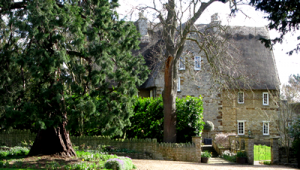 The Manor House is at the heart of the conservation area in Church Street, immediately next to St Mary’s church.
The Manor House is at the heart of the conservation area in Church Street, immediately next to St Mary’s church.
The thatch-roofed building (which is a private dwelling) dates from the early 1700s (the year 1704 appears on the south gable) – and is set amidst large, shady trees. The grounds contain traces of ancient mounds and hollows, suggesting that an earlier building on this site (possibly the residence of a Saxon Thane) may have been surrounded by a moat.
War memorial
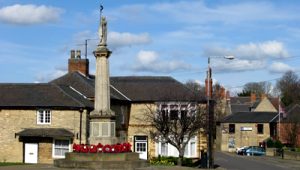 Burton Latimer’s war memorial currently stands at the junction of Church Street and High Street. However, since it was erected in 1922 it has proved to be a very mobile monument!
Burton Latimer’s war memorial currently stands at the junction of Church Street and High Street. However, since it was erected in 1922 it has proved to be a very mobile monument!
The structure was originally sited at the junction of High Street, Church Street and Meeting Lane. Then, in 1962, it was moved to a new spot outside the council offices, off High Street – only to be moved back to its original location (give or take a few yards) in the 1980s.
Each year, local people gather round the memorial at 11 o’clock on the 11th November to remember those who died in the two world wars of the 20th century, and to give thanks for those who returned.
Wind farm
 The first wind farm to be built in Northamptonshire is situated about a mile from Burton Latimer town centre, along Wold Road.
The 10 turbines – which started turning in March 2006 – are designed to generate a maximum total output of 20 Megawatts. This works out at 47 million units of renewable electricity annually, which is equivalent to the needs of around 10,000 homes – roughly a quarter of Kettering Borough’s households.
In 2007 Kettering Borough Council approved the Burton Wold Wind Farm landowner’s plans for an additional seven turbines to the north. And permission for a further five turbines at Burton Wold Wind Farm South between Burton Latimer and Finedon was granted by the Borough Council in March 2012.
The first wind farm to be built in Northamptonshire is situated about a mile from Burton Latimer town centre, along Wold Road.
The 10 turbines – which started turning in March 2006 – are designed to generate a maximum total output of 20 Megawatts. This works out at 47 million units of renewable electricity annually, which is equivalent to the needs of around 10,000 homes – roughly a quarter of Kettering Borough’s households.
In 2007 Kettering Borough Council approved the Burton Wold Wind Farm landowner’s plans for an additional seven turbines to the north. And permission for a further five turbines at Burton Wold Wind Farm South between Burton Latimer and Finedon was granted by the Borough Council in March 2012.
Burton Wold Wind Farm – community fund
A Community Fund is expected to provide £280,000 for worthwhile projects in Burton Latimer over the windfarm’s lifetime. More information about the fund – and what it can be used for – can be found on the North Northamptonshire Council (Kettering Area) website.Pocket park
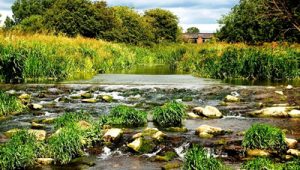 Burton Latimer Pocket Park is an 11 acre area of meadowland situated on the western fringe of Burton Latimer.
Burton Latimer Pocket Park is an 11 acre area of meadowland situated on the western fringe of Burton Latimer.
The park was established in 1995 on the flood-plain bordering the river Ise. There is a wide diversity of wildlife along the riverbank, and within the surrounding grassland and hedgerows.
Access to the park is from Station Road, and the site is also crossed by public footpaths to Isham and Kettering.
Annual duck race
Burton Latimer’s famous duck race and fete takes place in the pocket park in June each year.
Volunteers needed
The Pocket Park team requires additional volunteers to help run and organise events and to carry out maintenance work that may become necessary from time to time. All equipment is provided – you just need to supply your own energy and enthusiasm. For further information, phone Fergus on 07767 398386, or Maureen on 01536 725524.
The Round House
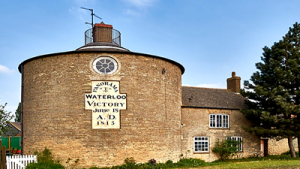 The Round House is an unusual building located on the edge of Burton Latimer, on the A510 between Finedon and Cranford.
The Round House is an unusual building located on the edge of Burton Latimer, on the A510 between Finedon and Cranford.
It was built in the early 19th century for the Arbuthnot family of nearby Woodford House, who were friends of the Duke of Wellington. On one of his visits, the Duke mentioned that the surrounding countryside reminded him of the Waterloo landscape – which is the reason for the inscription.
The building later became a wayside inn and named “The Waterloo Victory”, but it closed in the late 1800s and is now part of a farm. The panorama from the top reportedly encompasses 40 churches within the field of view.
More information about The Round House can be found on the Heritage Society website.

